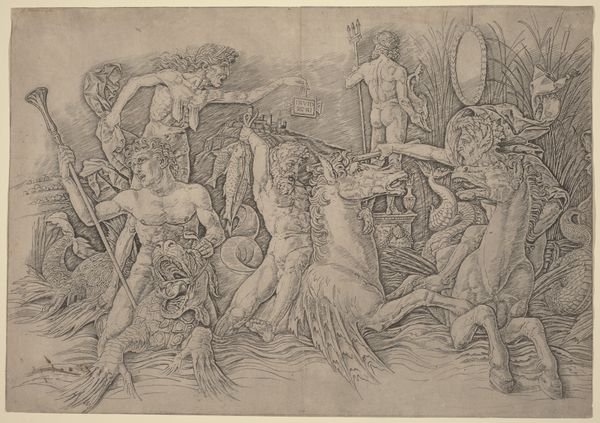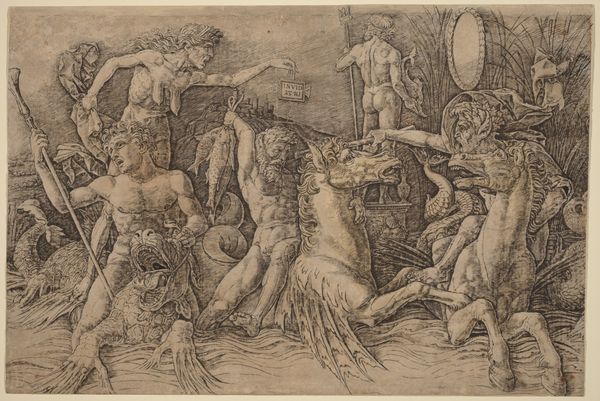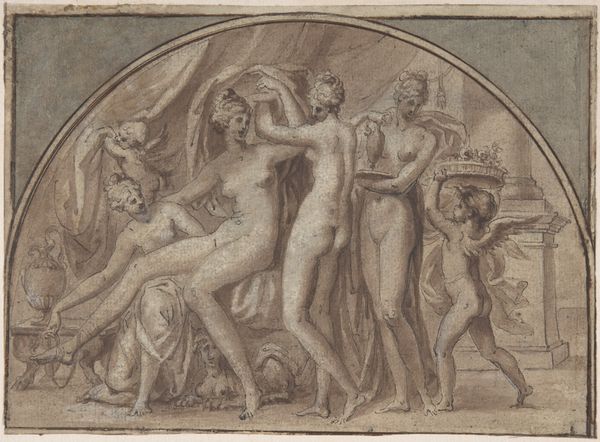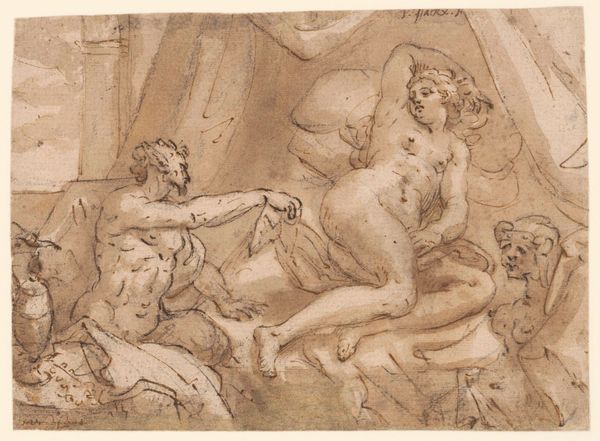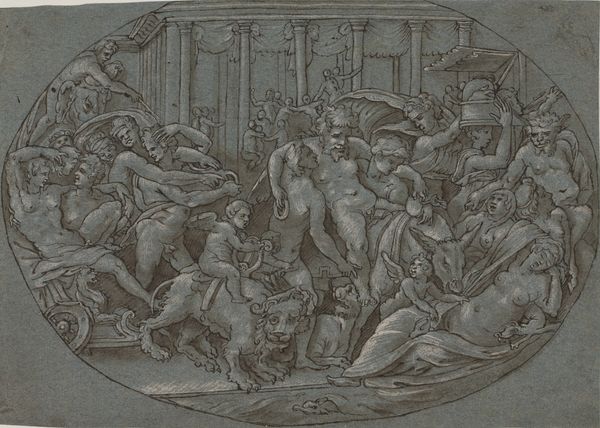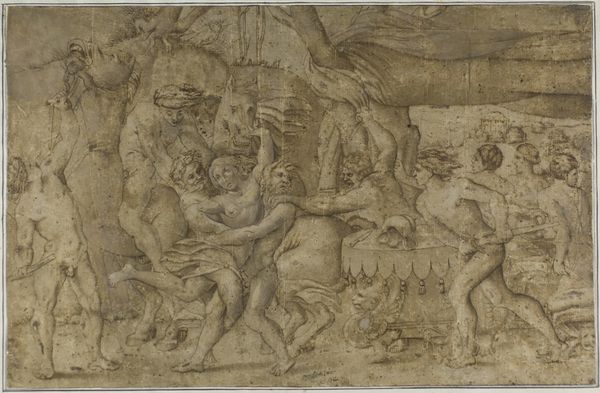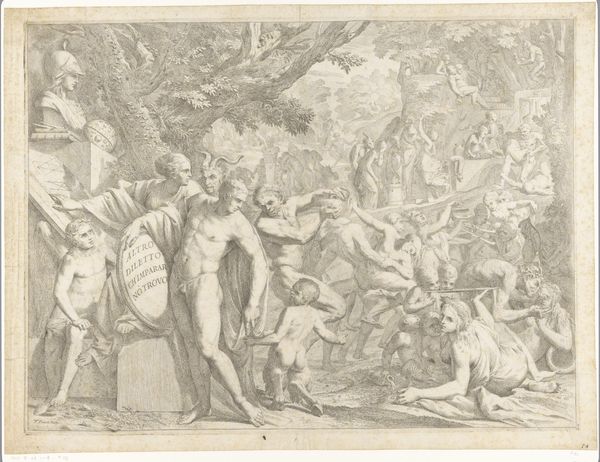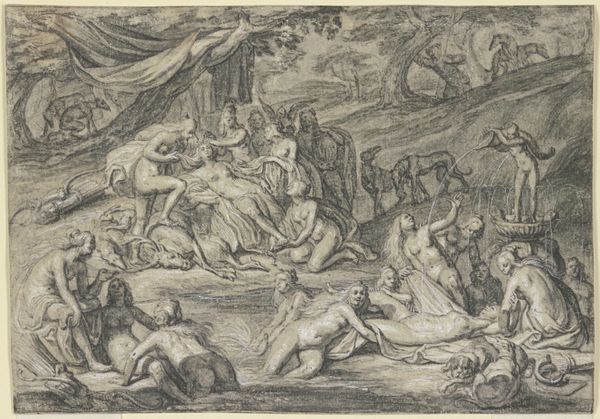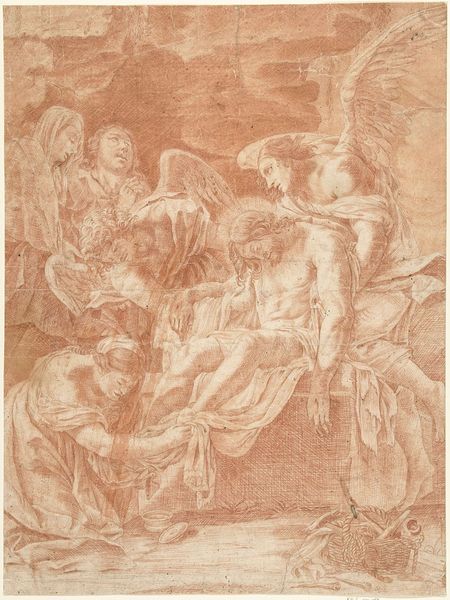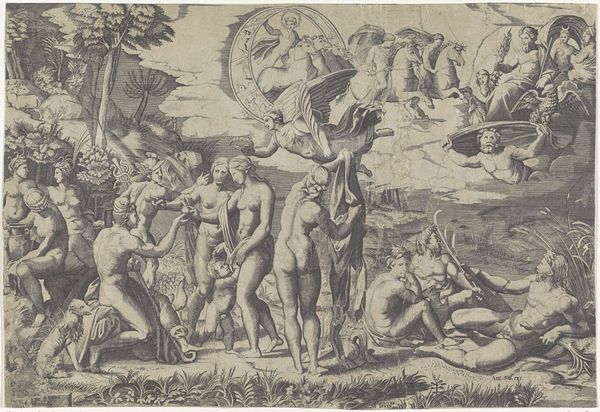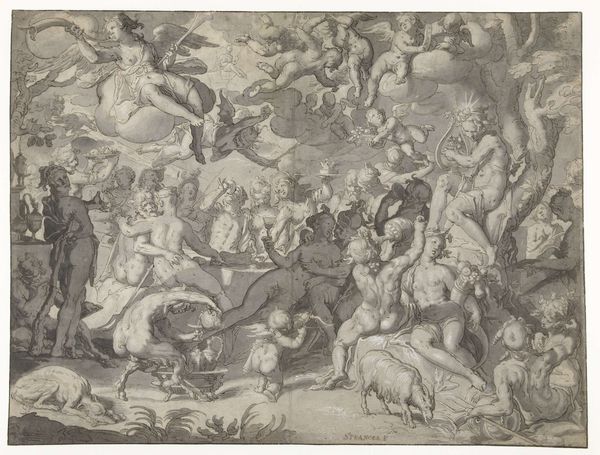
Gevecht tussen satyrs rijdend op hippocampussen en oude vrouw als personificatie van afgunst staand op rug van draak 1473 - 1477
0:00
0:00
drawing, ink, engraving
#
drawing
#
ink drawing
#
narrative-art
#
pen sketch
#
figuration
#
11_renaissance
#
ink
#
pencil drawing
#
history-painting
#
italian-renaissance
#
engraving
Dimensions: height 285 mm, width 418 mm
Copyright: Rijks Museum: Open Domain
Curator: Here at the Rijksmuseum, we have an intricate ink drawing by Andrea Mantegna entitled "Combat of the Marine Gods." It was created between 1473 and 1477. Editor: My immediate reaction is a sense of tumultuous energy. The figures are rendered with such vigorous strokes, they appear to be almost bursting out of the scene. The aquatic creatures especially seem wild, embodying a raw, untamed power. Curator: The artwork depicts satyrs riding hippocampuses engaging in battle while a personification of envy, represented as an old woman, stands atop a dragon's back. Mantegna's engravings played a key role in disseminating classical themes during the Italian Renaissance. Editor: Ah, the hag as "Invidia," or Envy! We see her offering a tablet marked with 'Invidia' itself, but also flanked by an upturned mirror—vanity distorted, and a reminder that envy often stems from self-comparison and twisted perspectives. The snakes, hippocampuses and dragons also become potent carriers of that poisonous association of the snake with betrayal, or darkness, even, of dragon power with that of malice and greed. The composition clearly signals this ancient understanding through symbol and figures. Curator: Exactly. What makes it striking, I think, is the way Mantegna blends classical iconography with his humanist interests. Prints like these served as accessible tools, enabling the distribution of symbolic knowledge and allegorical concepts beyond elite circles. It gave rise to the concept of shared memory. Editor: Yes, though I wonder how much the specific social anxieties regarding success, or standing, impacted its reading during the Renaissance. Today, looking at this work, what feelings do viewers experience or transfer? Do they align with original expectations, or perhaps the current perception changes the experience entirely? Curator: That is what makes it so exciting. Its influence and continuous relevance showcases the dynamic power of visual culture. What once served specific political or social purposes transforms into an artifact of cultural commentary across eras. Editor: Beautifully said. The emotional layers embedded within these figures, and their ongoing ability to elicit questions centuries later truly emphasizes the power of iconography.
Comments
No comments
Be the first to comment and join the conversation on the ultimate creative platform.
